Adding an amplifier to your car stereo is a great way to improve its performance. If the amp is going to power speakers, you should be able to listen to your music at higher volume levels without worrying about clipping distortion. Of course, we all know that one of the best upgrades you can make to any car audio system is to add a subwoofer and a dedicated amplifier to drive it. Your installer will need a line output converter interface when connecting that amplifier to a factory-installed radio. Should you use a stand-alone unit, or is the converter built into a high-quality amplifier adequate?
What Does a Line Output Converter Do?
The audio signal from most car radios is designed to drive a speaker. There are two connections for each speaker, a positive and a negative. There are signals on both of these wires that we call a bridge-tied load configuration. Unfortunately, many low-quality amplifiers with single-ended input circuitry won’t work with this signal configuration and could damage the radio.
Most amplifiers are designed to produce their maximum output with signals ranging from a few hundred millivolts to 4 or 5 volts. The sensitivity or gain control on the amplifier adjusts how much signal it produces so it can work with various voltages. Bad things will happen if the radio produces more voltage than the amp input stage can handle.
To summarize, a line output converter reduces the radio signal to something the amp can handle. It also converts the signal from a bridge-tied load to a single-ended configuration that will work with any amplifier, even those low-quality units that don’t have differential or balanced inputs.
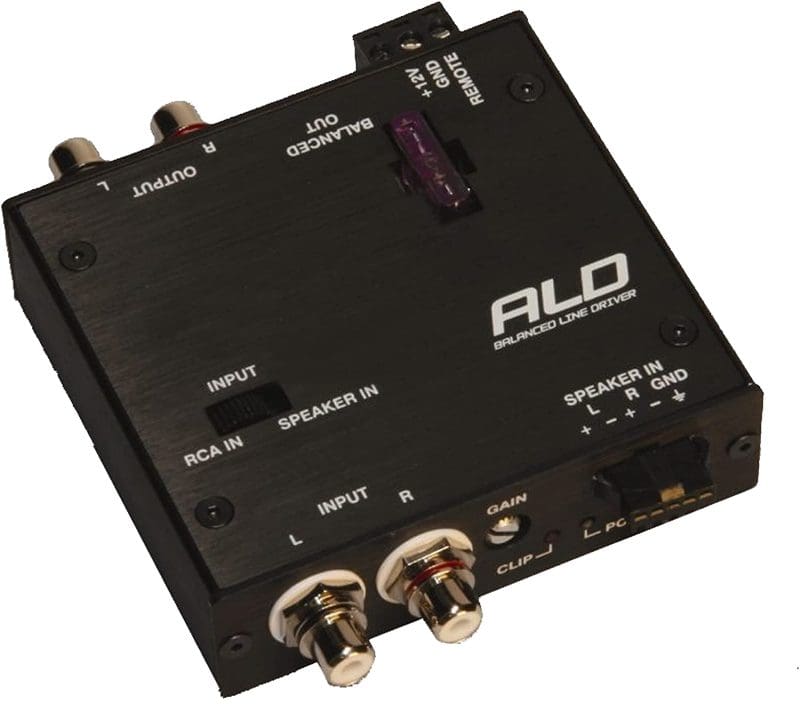
What Makes One LOC Better Than Another?
If you read our comparison of line output converters, you know that some do a good job of converting the signal from the radio and some add a lot of distortion while negatively affecting frequency response. Therefore, based on our research and testing, you’ll want to avoid transformer-based converters.
Beyond that, why would a person choose an external converter from ARC Audio, Wavtech or AudioControl over a converter built into an amplifier? There are two reasons.
The first reason you might need to use an external line output converter is to deal with high voltages. If you have an amplifier connected to the output of a high-power factory-installed amplifier, there may be as much as 40 volts on the speaker wires to contend with. Almost no analog-only amplifier can handle this much voltage. Your installer will need an audio frequency analyzer and an oscilloscope to determine the maximum voltage of the signal coming out of the factory-installed audio system.
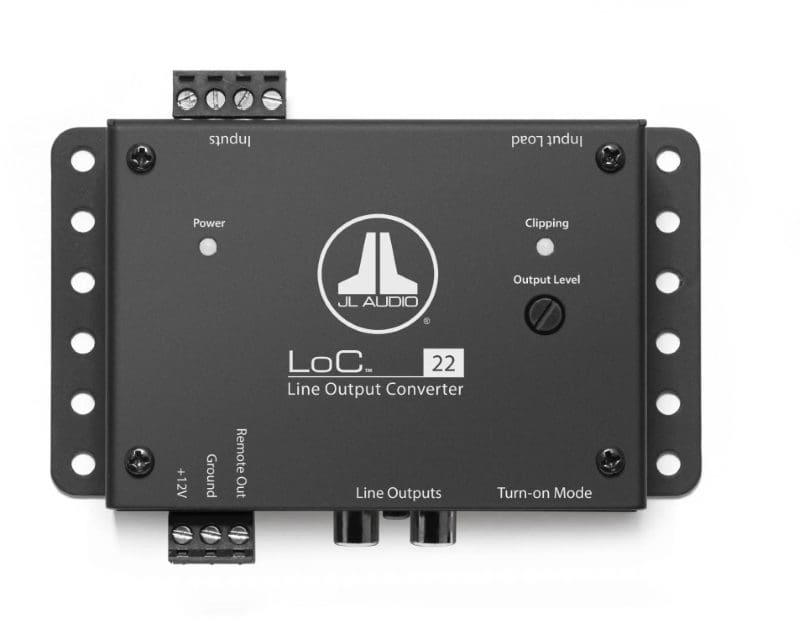
Amplifier Activation Circuitry
Another reason you might need an external line output converter is if your chosen amplifier doesn’t have automatic turn-on circuitry. When an aftermarket amplifier is connected to an aftermarket source unit, a control wire on the radio tells the amp when to turn it on and off. Unfortunately, in 99% of upgrades that use a factory-installed radio, there is no wire available to tell the amp what to do.
Many high-quality line output converters include remote turn-on circuitry. These converters have a wire that can be connected to the remote turn-on terminal on your amp to activate it when you turn on the radio or start playing music.
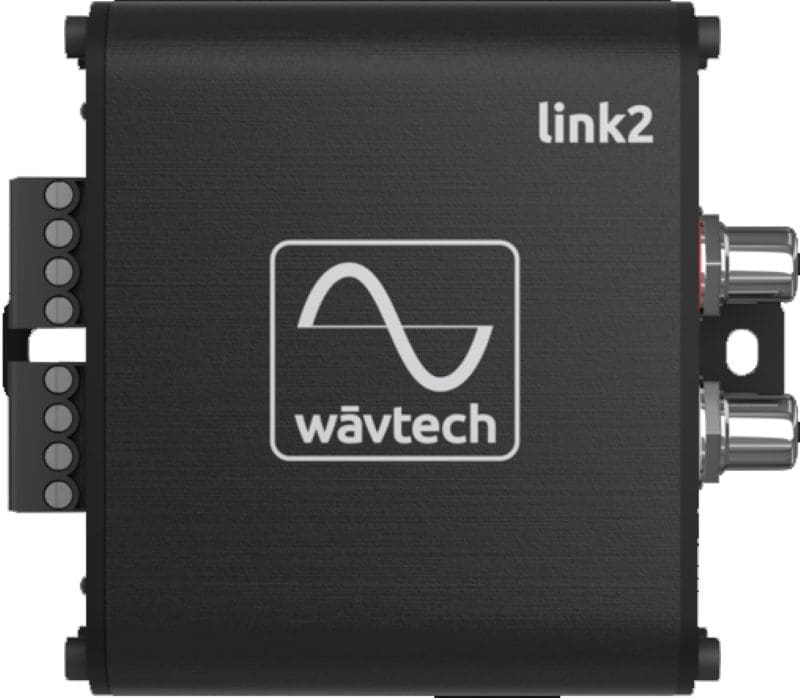
Are Built-In Line Output Converters Good?
The last consideration in our discussion about line output converters is their performance. Is there a performance benefit to be had by using a premium external converter instead of one built into an amplifier? The answer depends on a few variables. If the LOC is connected to a simple radio with a built-in 18- to 20-watts-per-channel amplifier, using the converter built into an amplifier will be just fine. There are other considerations if the factory-installed audio system uses a Class D amplifier. Class D amplifiers MUST have a low-impedance load connected to their outputs to function correctly. You may have heard of load resistors or similar in discussions about connecting to a factory-installed audio system.
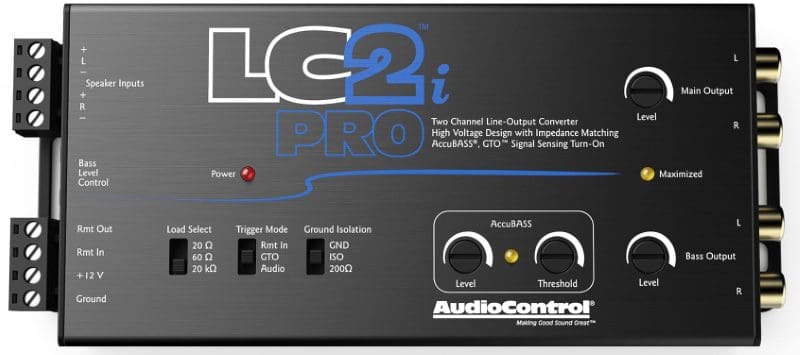
If your vehicle comes with a Class D amplifier, it needs something like the AudioControl LGD wired to the speaker terminals. Which of the AC-LGD devices your vehicle needs depends on the amp design. Your installer will know which they should use. Once these are in place, you can use the LOC built into an amplifier. An alternative is to use a LOC that has load-generating resistors built in. The Wavtech and AudioControl solutions include this feature.
When it’s time to upgrade the factory-installed stereo in your vehicle, drop by a local specialty mobile enhancement retailer. They can suggest the best products to deliver the sound you want and will install them to maximize their performance. For example, if they suggest an amplifier with a built-in line output converter, it could save you some money.
This article is written and produced by the team at www.BestCarAudio.com. Reproduction or use of any kind is prohibited without the express written permission of 1sixty8 media.
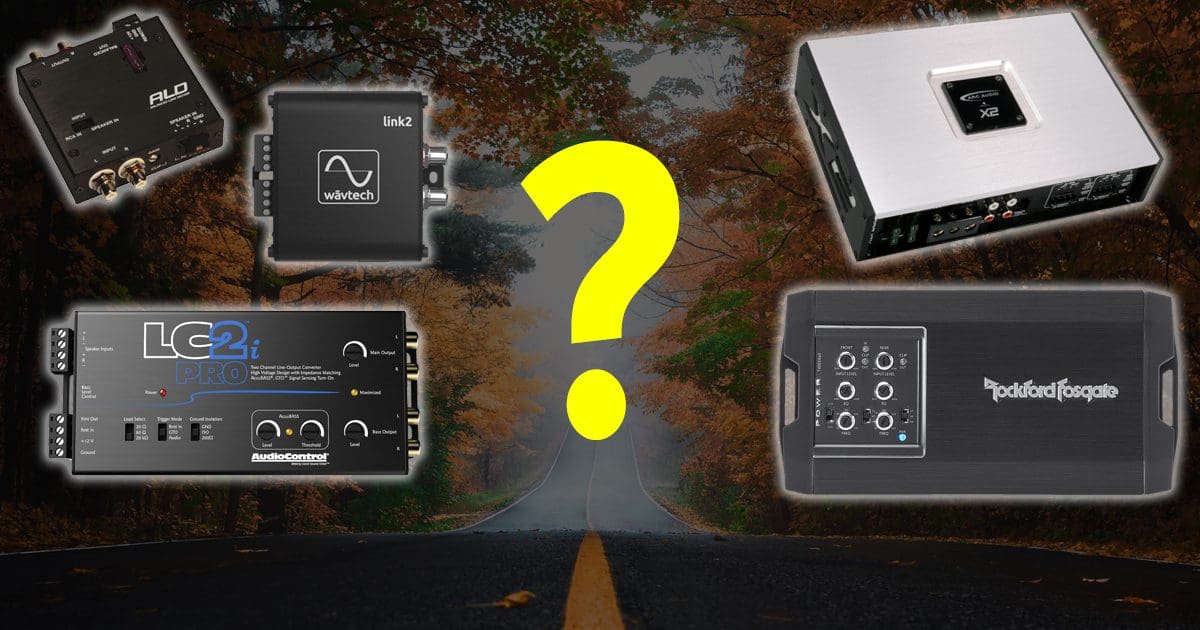

Leave a Reply